
How to Use LM2596S: Examples, Pinouts, and Specs
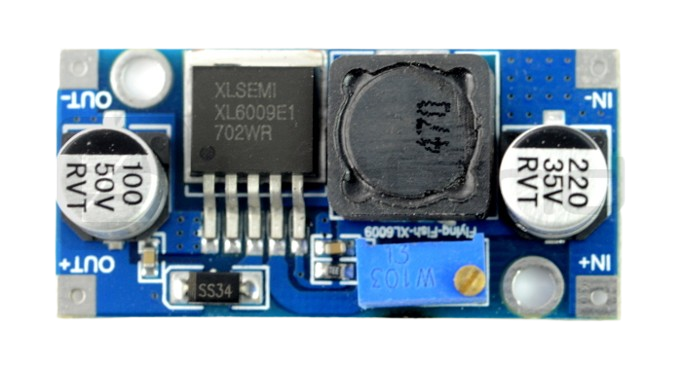
 Design with LM2596S in Cirkit Designer
Design with LM2596S in Cirkit DesignerIntroduction
The LM2596S is a step-down (buck) voltage regulator designed to efficiently convert a higher input voltage into a stable, regulated output voltage. It is capable of delivering up to 3A of output current, making it ideal for powering a wide range of electronic devices. With its wide input voltage range (4.5V to 40V) and high efficiency, the LM2596S is commonly used in power supply circuits, battery chargers, and embedded systems.
Explore Projects Built with LM2596S
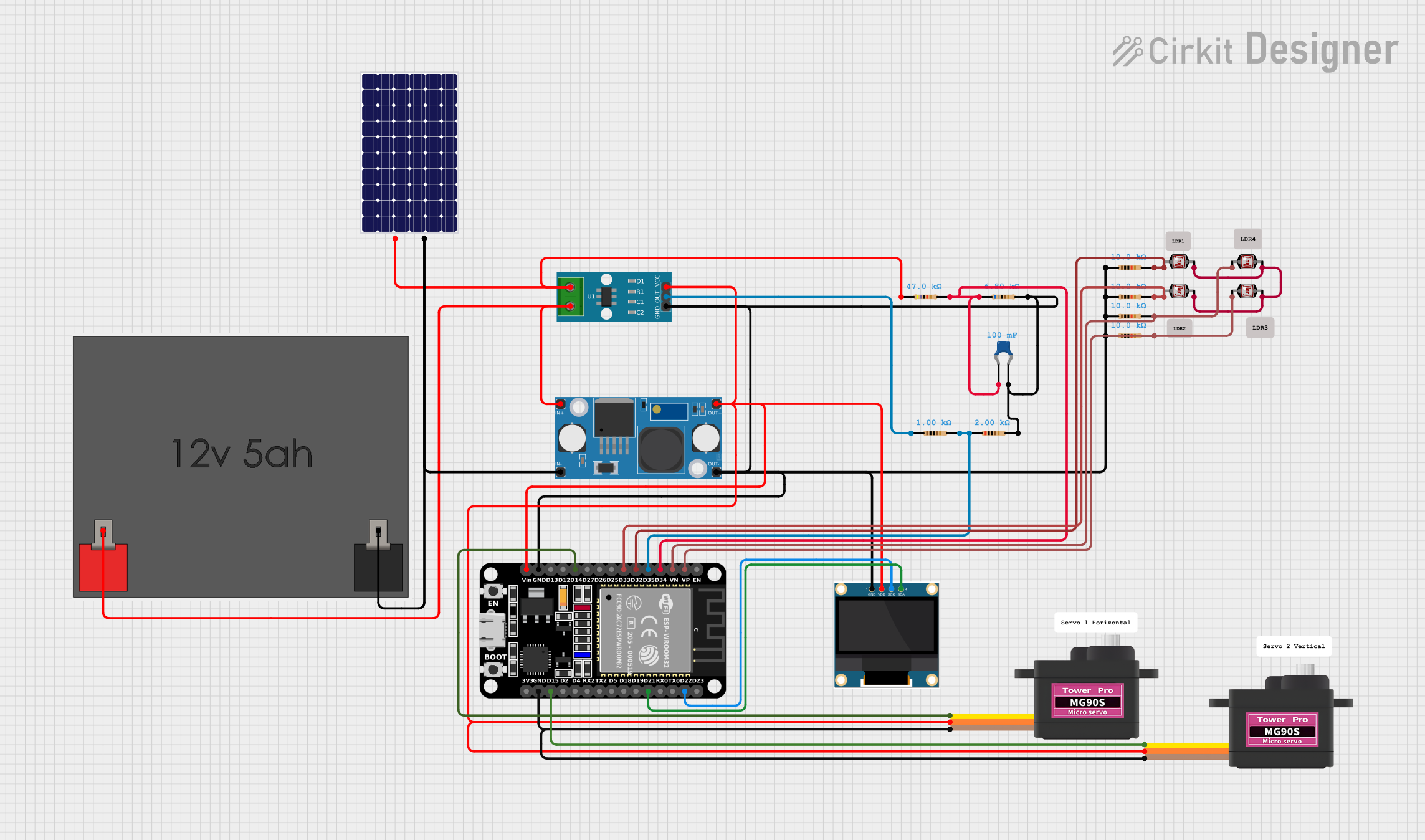
 Open Project in Cirkit Designer
Open Project in Cirkit Designer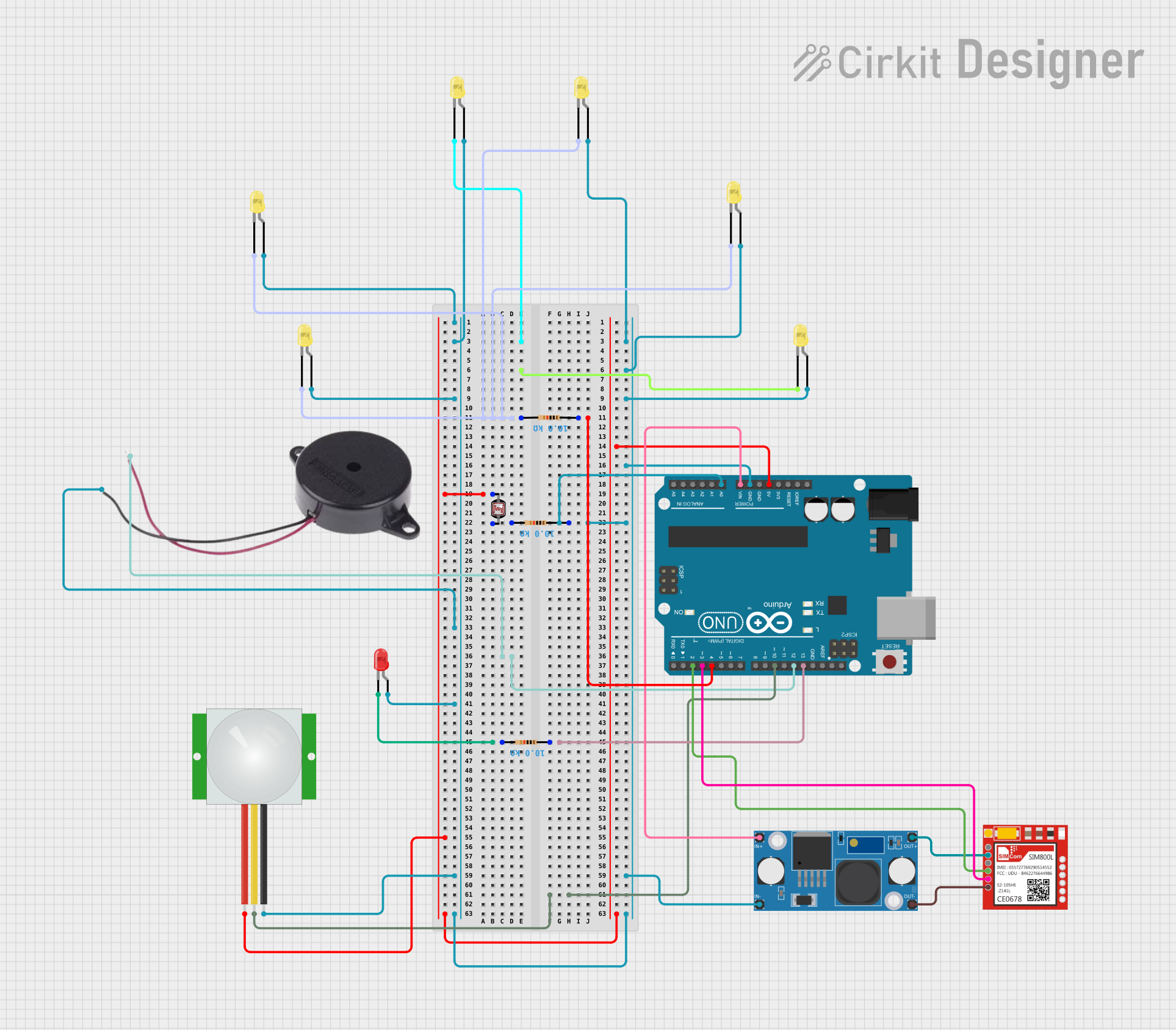
 Open Project in Cirkit Designer
Open Project in Cirkit Designer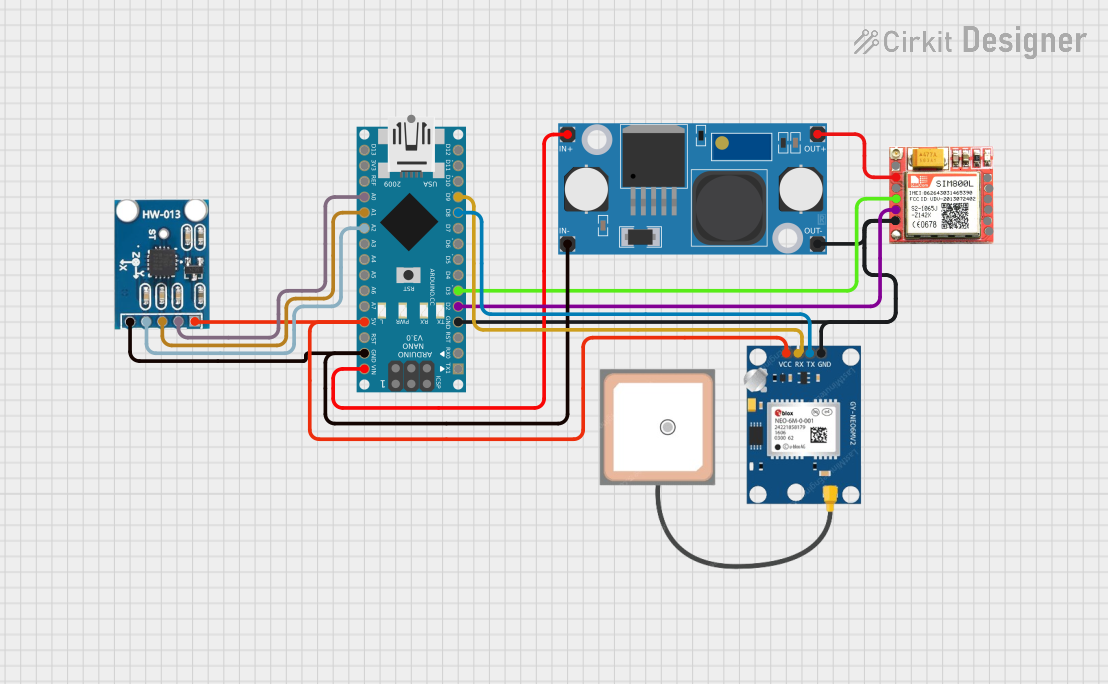
 Open Project in Cirkit Designer
Open Project in Cirkit Designer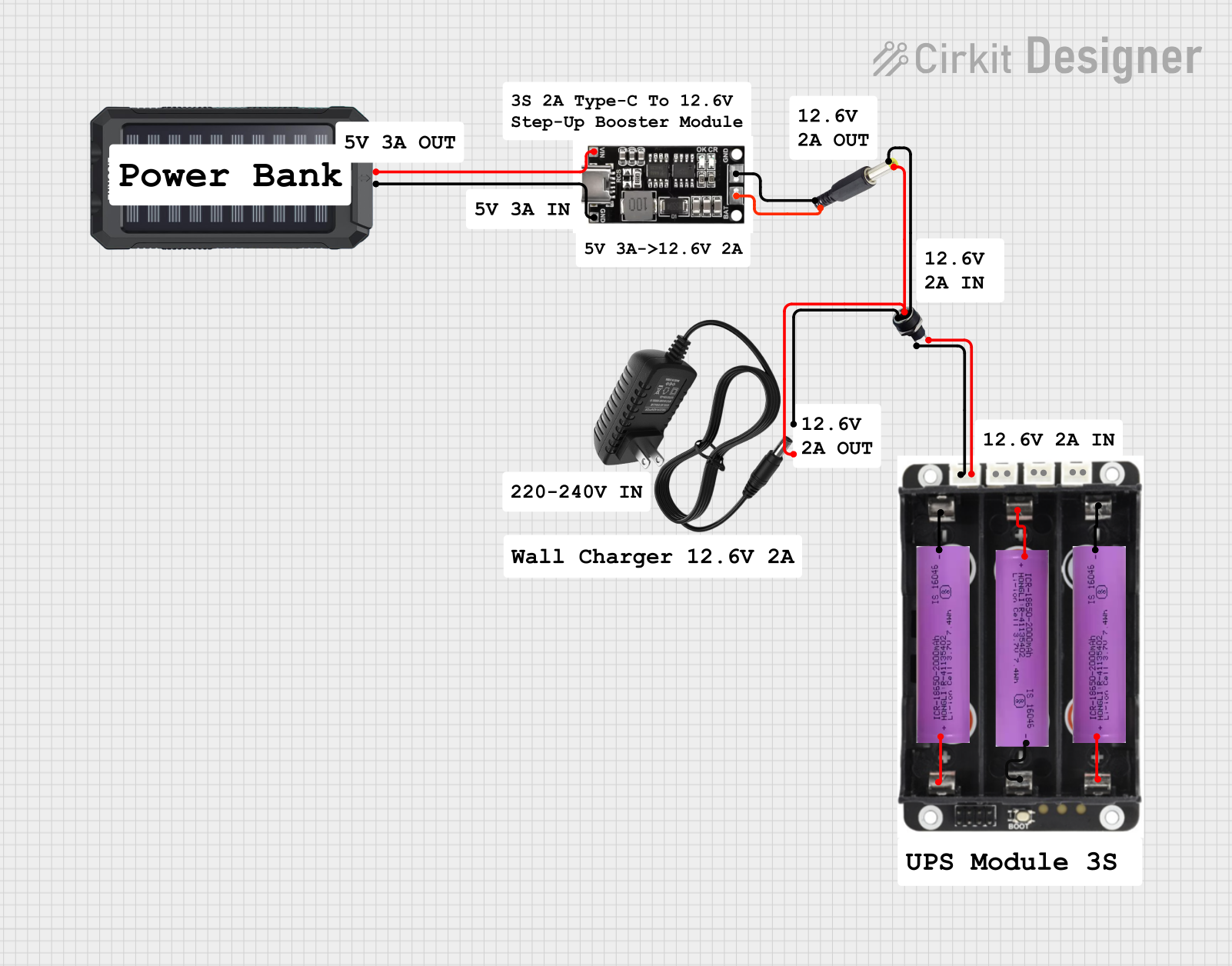
 Open Project in Cirkit Designer
Open Project in Cirkit DesignerExplore Projects Built with LM2596S

 Open Project in Cirkit Designer
Open Project in Cirkit Designer
 Open Project in Cirkit Designer
Open Project in Cirkit Designer
 Open Project in Cirkit Designer
Open Project in Cirkit Designer
 Open Project in Cirkit Designer
Open Project in Cirkit DesignerCommon Applications and Use Cases
- DC-DC power supply modules
- Battery-powered devices
- Voltage regulation for microcontrollers and sensors
- LED drivers
- Industrial and automotive electronics
Technical Specifications
The LM2596S is a versatile and robust component. Below are its key technical details:
| Parameter | Value |
|---|---|
| Input Voltage Range | 4.5V to 40V |
| Output Voltage Range | 1.23V to 37V (adjustable version) |
| Output Current | Up to 3A |
| Efficiency | Up to 90% |
| Switching Frequency | 150 kHz |
| Operating Temperature | -40°C to +125°C |
| Package Type | TO-263 (SMD) |
Pin Configuration and Descriptions
The LM2596S has 5 pins, as described in the table below:
| Pin Number | Pin Name | Description |
|---|---|---|
| 1 | VIN | Input voltage pin. Connect to the unregulated DC input voltage. |
| 2 | Output | Regulated output voltage pin. Connect to the load. |
| 3 | Ground (GND) | Ground pin. Connect to the circuit ground. |
| 4 | Feedback | Feedback pin. Used to set the output voltage with an external resistor divider. |
| 5 | ON/OFF | Enable pin. Logic high enables the regulator; logic low disables it. |
Usage Instructions
How to Use the LM2596S in a Circuit
- Input Voltage: Connect the input voltage (4.5V to 40V) to the VIN pin. Ensure the input voltage is higher than the desired output voltage by at least 3V for proper regulation.
- Output Voltage: Use a resistor divider network connected to the Feedback pin to set the desired output voltage. The formula for the output voltage is: [ V_{OUT} = V_{REF} \times \left(1 + \frac{R1}{R2}\right) ] where ( V_{REF} ) is 1.23V.
- Capacitors: Place input and output capacitors close to the VIN and Output pins to stabilize the circuit. Typical values are:
- Input capacitor: 100 µF electrolytic
- Output capacitor: 220 µF electrolytic
- Inductor: Select an appropriate inductor value based on the desired output current and voltage. A typical value is 33 µH.
- Enable Pin: Connect the ON/OFF pin to logic high (or leave it unconnected) to enable the regulator. Pull it to ground to disable the regulator.
Example Circuit
Below is a basic circuit diagram for using the LM2596S to step down 12V to 5V:
VIN (12V) ----[100 µF]----+----> LM2596S (VIN)
|
[33 µH]
|
+----> LM2596S (Output) ----[220 µF]----> VOUT (5V)
|
[R1]
|
+----> LM2596S (Feedback)
|
[R2]
|
GND
Arduino UNO Example Code
The LM2596S can be used to power an Arduino UNO. Below is an example code to read the output voltage using the Arduino's ADC:
// Define the analog pin connected to the output voltage divider
const int voltagePin = A0;
// Reference voltage for the ADC (5V for Arduino UNO)
const float referenceVoltage = 5.0;
// Voltage divider resistor values (adjust based on your circuit)
const float R1 = 10000.0; // 10k ohms
const float R2 = 2000.0; // 2k ohms
void setup() {
Serial.begin(9600); // Initialize serial communication
}
void loop() {
int adcValue = analogRead(voltagePin); // Read the ADC value
float voltage = (adcValue / 1023.0) * referenceVoltage; // Convert to voltage
voltage = voltage * ((R1 + R2) / R2); // Adjust for the voltage divider
// Print the output voltage to the serial monitor
Serial.print("Output Voltage: ");
Serial.print(voltage);
Serial.println(" V");
delay(1000); // Wait for 1 second before the next reading
}
Important Considerations and Best Practices
- Heat Dissipation: The LM2596S can generate heat during operation, especially at high currents. Use a heatsink or ensure proper ventilation to prevent overheating.
- Input Voltage Margin: Ensure the input voltage is at least 3V higher than the desired output voltage for stable operation.
- Component Placement: Place the input and output capacitors as close as possible to the LM2596S to minimize noise and improve stability.
- Inductor Selection: Choose an inductor with a current rating higher than the maximum output current to avoid saturation.
Troubleshooting and FAQs
Common Issues and Solutions
Output Voltage is Incorrect
- Check the resistor divider network connected to the Feedback pin. Ensure the resistor values are correct.
- Verify that the input voltage is at least 3V higher than the desired output voltage.
Regulator Overheating
- Ensure the LM2596S is not exceeding its maximum current rating of 3A.
- Use a heatsink or improve airflow around the component.
No Output Voltage
- Check the ON/OFF pin. Ensure it is connected to logic high or left unconnected.
- Verify all connections, especially the input and ground pins.
High Output Ripple
- Increase the value of the output capacitor.
- Use low-ESR capacitors for better performance.
FAQs
Q: Can the LM2596S be used for negative voltage regulation?
A: No, the LM2596S is designed for positive voltage regulation only. For negative voltage regulation, consider using a different regulator.
Q: What is the maximum efficiency of the LM2596S?
A: The LM2596S can achieve an efficiency of up to 90%, depending on the input and output voltage conditions.
Q: Can I use the LM2596S without an inductor?
A: No, an inductor is essential for the proper operation of the LM2596S as it is a switching regulator.
Q: Is the LM2596S suitable for battery-powered applications?
A: Yes, the LM2596S is highly efficient and suitable for battery-powered devices, provided the input voltage is within its operating range.